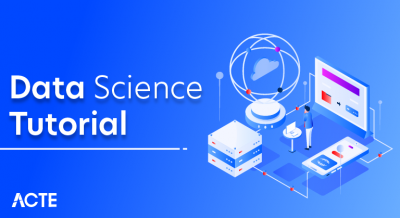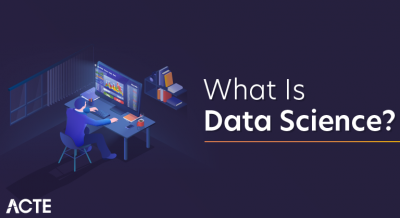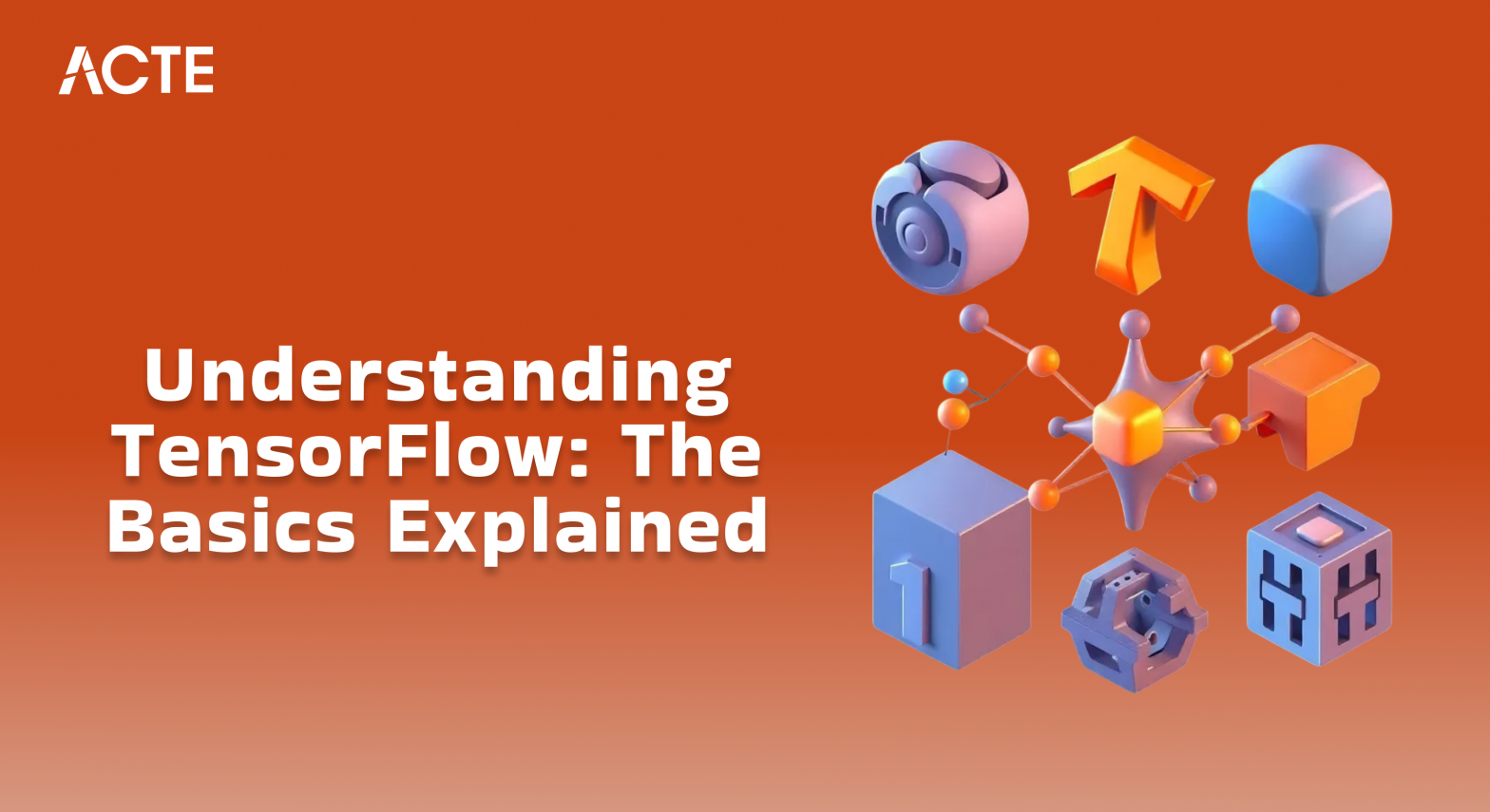
- Introduction to TensorFlow
- History and Background of TensorFlow
- Architecture of TensorFlow
- TensorFlow Installation
- Key Features of TensorFlow
- TensorFlow vs Other Frameworks
- Applications of TensorFlow
- TensorFlow for Deep Learning
- TensorFlow Lite and TensorFlow.js
- Building the First Model with TensorFlow
Introduction to TensorFlow
TensorFlow is an open-source machine learning framework developed by Google, designed to build, train, and deploy machine learning models, especially for deep learning tasks like image recognition and natural language processing. It offers both high-level APIs, like Keras, and low-level APIs for greater flexibility in model design. TensorFlow supports multiple platforms, including CPUs, GPUs, and TPUs, allowing for efficient computation and scalability. The framework is compatible with languages like Python, C++, and JavaScript, making it versatile across different environments. It uses a computational graph to optimize model performance and simplify debugging. Additionally, TensorFlow integrates with tools such as TensorFlow Lite for mobile devices and TensorFlow.js for browser-based machine learning, making it an ideal choice for Data Science Training across different platforms and environments With its extensive documentation, active community, and support for a wide range of AI tasks, TensorFlow has become a popular choice for both researchers and developers looking to build robust AI systems.
Would You Like to Know More About Data Science? Sign Up For Our Data Science Course Training Now!
History and Background of TensorFlow
- Origins at Google: TensorFlow was developed by the Google Brain team and released in November 2015 as an open-source project. It was designed to simplify machine learning and deep learning tasks and improve accessibility for researchers and developers worldwide.
- Predecessor: DistBelief: Before TensorFlow, Google developed an internal machine learning system called DistBelief, which was primarily used within the company for various AI research. TensorFlow was created as an evolution of DistBelief to be more flexible and scalable.
- Focus on Deep Learning: TensorFlow’s initial focus was on deep learning, particularly neural networks. It aimed to optimize tasks such as training deep neural networks and was designed to scale across multiple CPUs and GPUs for efficient computation.
- TensorFlow’s Computational Graph: The core design of TensorFlow revolves around computational graphs, where computations are represented as nodes and edges. This design allows for easy model optimization, parallel processing, and deployment on different hardware.
- Open Source Release: TensorFlow’s release as an open-source library marked a significant shift in making advanced machine learning tools available to the global community. This enabled widespread adoption by both academic researchers and industry practitioners, fostering the growth of What is Data Science and its application in real-world scenarios.
- Keras Integration: In 2017, TensorFlow integrated Keras, a high-level neural networks API, which simplified the model-building process and made TensorFlow more user-friendly for beginners and researchers alike.
- Expanding to Multiple Platforms: Over time, TensorFlow expanded its capabilities to support various platforms such as TensorFlow Lite (for mobile devices) and TensorFlow.js (for browser-based machine learning), broadening its application range beyond traditional computing environments.
- Continual Growth and Popularity: Since its release, TensorFlow has grown to become one of the most widely-used machine learning frameworks in the world, with an active community, extensive documentation, and frequent updates, maintaining its position as a leader in AI development.
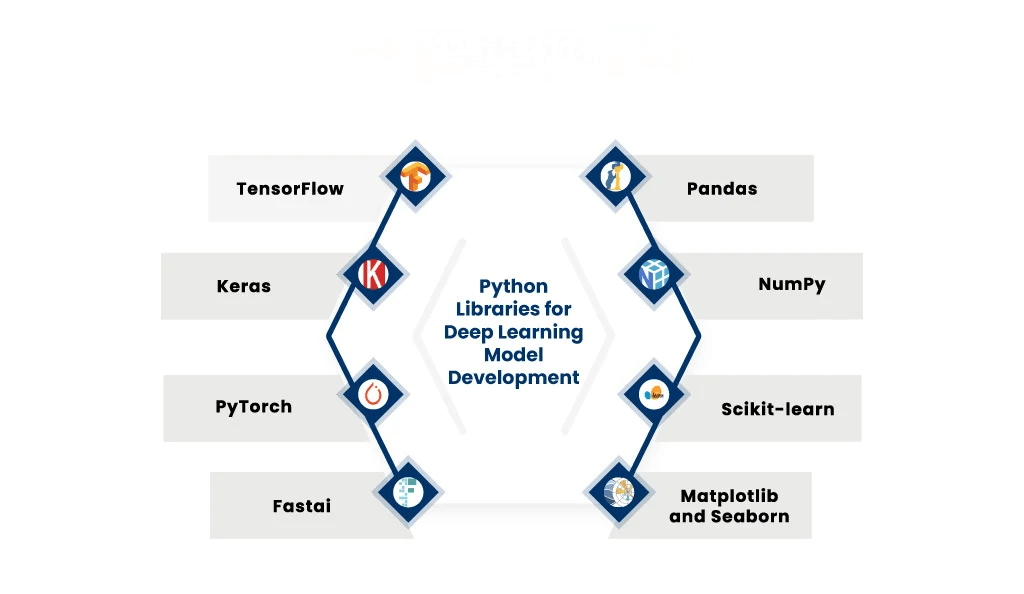
Architecture of TensorFlow
The architecture of TensorFlow is designed to be flexible, scalable, and efficient, enabling the development of machine learning models across various platforms. At its core, TensorFlow uses a computational graph where nodes represent operations (such as addition or matrix multiplication) and edges represent the flow of data in the form of tensors, which are multi-dimensional arrays. This graph-based approach allows for parallel computation and optimization, making TensorFlow highly efficient in handling large datasets and complex operations, highlighting the differences between Data Mining Vs Data Science in terms of processing and analyzing vast amounts of data for meaningful insights. Tensors, the fundamental data structure in TensorFlow, serve as the building blocks for all computations and can represent scalars, vectors, matrices, or higher-dimensional arrays. Once the graph is defined, a session is created to execute the operations within it. The session manages the execution of the computational graph, allocating resources, running operations, and retrieving outputs. TensorFlow is designed to run on multiple devices, including CPUs, GPUs, and specialized hardware like TPUs (Tensor Processing Units), allowing for distributed computation. This architecture also enables seamless deployment across different environments, from local machines to cloud infrastructure. By abstracting low-level operations into high-level APIs like Keras, TensorFlow ensures that it can be used by both beginner and advanced users while maintaining the flexibility needed for complex machine learning tasks.
TensorFlow Installation
Installing TensorFlow is a straightforward process that supports Windows, macOS, and Linux platforms, with compatibility for Python versions 3.7 to 3.11. Users can choose between the CPU version, which is simpler and suitable for most basic tasks, and the GPU version, which offers faster computation but requires additional setup, including compatible NVIDIA drivers, the CUDA Toolkit, and cuDNN libraries. To maintain a clean and organized environment, it is recommended to install TensorFlow within a virtual environment using tools like venv or Anaconda, helping to prevent package conflicts. For more advanced or production-level needs, Docker can be used to create consistent and reproducible environments across systems. While the CPU version is sufficient for learning and small-scale projects, users working with large datasets or complex models may benefit from the enhanced performance of the GPU version, making it one of the Top Data Science Tools for high-performance computation and model training. After installation, verifying the setup ensures that TensorFlow is correctly installed and ready for use in developing machine learning applications.
Key Features of TensorFlow
- Open Source: TensorFlow is an open-source framework, allowing developers and researchers to use, modify, and contribute to its codebase freely.
- Scalability: It supports distributed computing, enabling model training and deployment across CPUs, GPUs, and TPUs, both on local machines and cloud platforms.
- Flexible Architecture: TensorFlow’s architecture supports both high-level APIs like Keras for quick prototyping and low-level operations for building custom models.
- Cross-Platform Compatibility: Models built with TensorFlow can run on desktops, mobile devices (via TensorFlow Lite), web browsers (via TensorFlow.js), and embedded systems.
- Robust Ecosystem: TensorFlow includes tools such as TensorBoard for visualization, TensorFlow Hub for reusable model components, and TensorFlow Serving for model deployment.
- Automatic Differentiation: It supports automatic computation of gradients, which simplifies the process of training neural networks through backpropagation.
- Model Deployment: TensorFlow makes it easy to deploy models in various environments, from cloud servers to edge devices, using tools like TensorFlow Serving and TensorFlow Lite.
- Community and Documentation: A large, active community and extensive documentation make it easier for users to find support, tutorials, and resources for learning and troubleshooting.
TensorFlow vs Other Frameworks
TensorFlow stands out among machine learning frameworks due to its flexibility, scalability, and broad ecosystem, but it competes closely with other popular tools like PyTorch, Keras, Scikit-learn, and MXNet. One of TensorFlow’s key advantages is its production-ready capabilities, offering robust deployment tools such as TensorFlow Serving, TensorFlow Lite for mobile, and TensorFlow.js for web applications, making it ideal for enterprise-level applications. PyTorch, developed by Facebook, is often preferred in research settings for its dynamic computation graph and intuitive Pythonic design, which make debugging and prototyping easier. However, TensorFlow has addressed these concerns with the introduction of eager execution, bringing its interface closer to PyTorch’s flexibility, which is valuable for gaining Data Analyst salary insight and understanding the growing demand for data analysis skills in the industry. Keras, originally a standalone high-level API, is now integrated into TensorFlow, providing a user-friendly interface for building and training models, making TensorFlow more accessible to beginners. In contrast, Scikit-learn is well-suited for classical machine learning tasks but lacks deep learning capabilities and GPU support, limiting its use for large-scale neural networks. MXNet, backed by Amazon, offers strong scalability and performance for cloud environments, but it has a smaller community and less widespread adoption compared to TensorFlow. Overall, TensorFlow’s strengths lie in its comprehensive ecosystem, cross-platform support, and strong community backing, making it a versatile choice for both research and large-scale production deployments. While other frameworks may excel in specific areas, such as PyTorch in research or Scikit-learn in classical ML, TensorFlow remains a dominant and well-rounded framework that caters to a wide spectrum of machine learning applications.
Want to Pursue a Data Science Master’s Degree? Enroll For Data Science Masters Course Today!
Applications of TensorFlow
TensorFlow is widely used across various industries and domains due to its powerful capabilities in building and deploying machine learning and deep learning models. In image recognition and computer vision, TensorFlow is used to develop applications like facial recognition, object detection, image classification, and medical imaging diagnostics. In natural language processing (NLP), it powers tools such as chatbots, sentiment analysis systems, language translation models, and speech recognition. TensorFlow is also extensively used in time series analysis and forecasting, helping businesses with stock market predictions, sales forecasting, and anomaly detection. In the healthcare sector, TensorFlow enables predictive analytics, disease detection from medical scans, and personalized treatment recommendations, making it a valuable tool for Data Science Training in the development of advanced healthcare solutions. In autonomous systems, such as self-driving cars and robotics, it supports real-time decision-making and object tracking. The financial industry uses TensorFlow for fraud detection, credit scoring, and algorithmic trading. In recommendation systems, platforms like e-commerce websites and streaming services use TensorFlow to personalize user experiences. Moreover, TensorFlow’s support for mobile and embedded devices allows developers to create AI-powered mobile apps using TensorFlow Lite. In research and academia, it is a go-to tool for prototyping and testing new machine learning algorithms. Overall, TensorFlow’s flexibility, scalability, and broad toolset make it suitable for a wide range of real-world AI applications.
TensorFlow for Deep Learning
TensorFlow is one of the most widely used frameworks for developing deep learning models due to its powerful capabilities, scalability, and flexibility. It provides a comprehensive ecosystem that supports the entire deep learning workflow from model building and training to evaluation and deployment. TensorFlow makes it easy to design complex neural networks such as convolutional neural networks (CNNs) for image processing, recurrent neural networks (RNNs) for sequence and time-series data, and transformers for natural language processing tasks. With the integration of Keras, a high-level API within TensorFlow, users can build deep learning models more intuitively using simple and readable code, which is especially beneficial for beginners. TensorFlow also supports automatic differentiation and optimization techniques, Learning Data Science from Scratch which are essential for training deep neural networks using backpropagation. Furthermore, it allows models to be trained on multiple GPUs or TPUs, significantly speeding up the learning process for large datasets. TensorFlow’s modular architecture makes it suitable for research and experimentation as well as large-scale industrial applications. It also provides visualization tools like TensorBoard for tracking model performance, loss metrics, and graph structure. Additionally, trained deep learning models can be easily deployed across different platforms, including web browsers, mobile devices, and embedded systems, thanks to TensorFlow.js and TensorFlow Lite. Overall, TensorFlow offers a robust and scalable solution for developing and deploying state-of-the-art deep learning models.
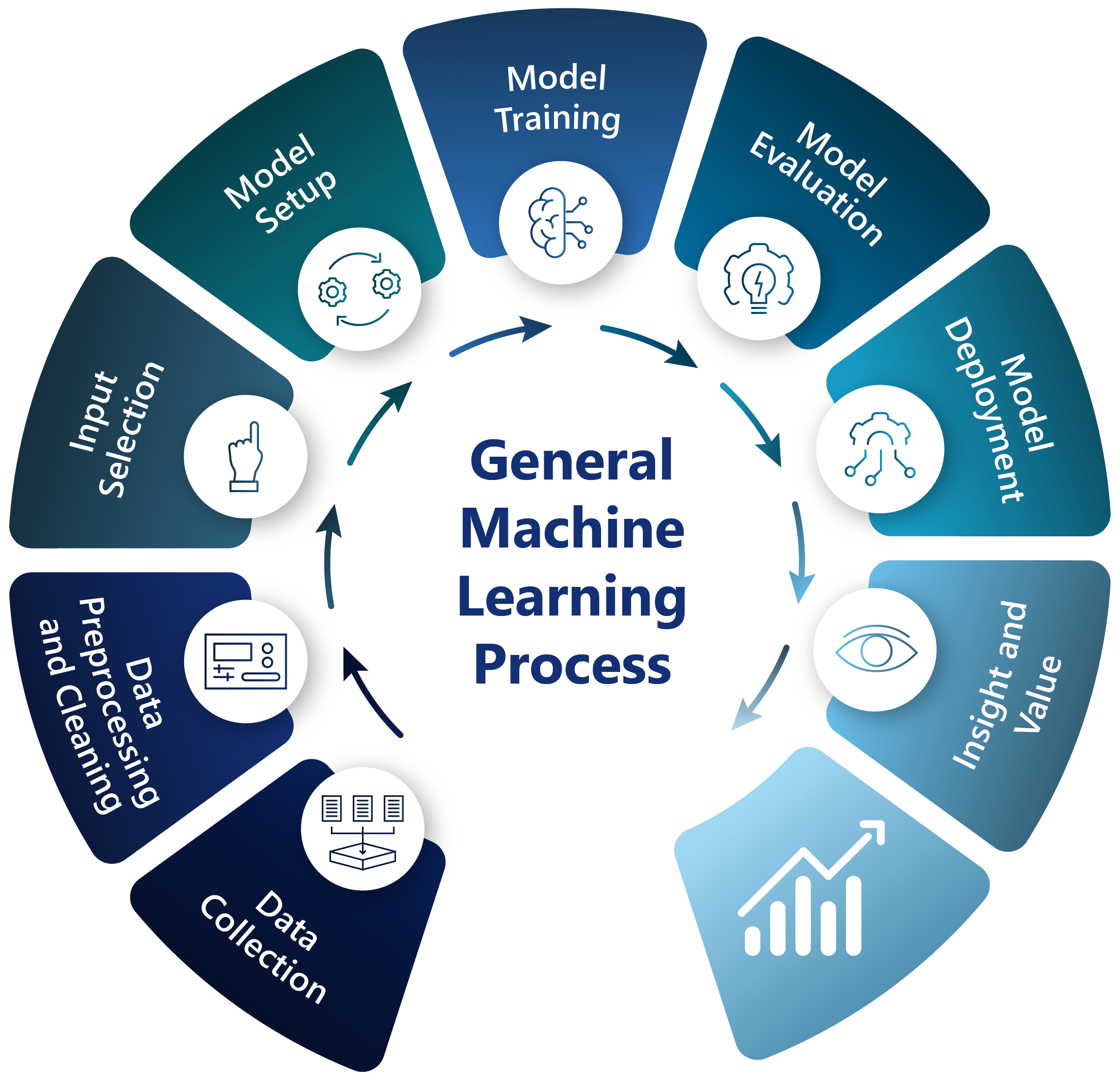
TensorFlow Lite and TensorFlow.js
- TensorFlow Lite is a lightweight version of TensorFlow designed specifically for deploying machine learning models on mobile devices, embedded systems, and IoT devices with limited computational resources.
- TensorFlow.js is a JavaScript library that allows developers to build and run machine learning models directly in web browsers or on Node.js, enabling real-time inference in client-side applications.
- Optimized Performance: TensorFlow Lite models are optimized for speed and efficiency, making them suitable for on-device inference without needing server-side processing or internet connectivity.
- Cross-Platform Compatibility: TensorFlow.js supports a wide range of devices and platforms, including desktops, laptops, smartphones, and even microcontrollers, allowing ML models to run wherever JavaScript runs.
- Real-Time Inference:Both TensorFlow Lite and TensorFlow.js enable real-time inference, which is ideal for use cases like gesture recognition, object detection, voice commands, and augmented reality, making it an excellent tool for those considering Data Science Course eligibility and wanting to apply machine learning in practical, real-time scenarios.
- Model Conversion Tools: TensorFlow provides tools to convert standard TensorFlow models into formats compatible with TensorFlow Lite and TensorFlow.js, ensuring a smooth transition from training to deployment.
- Offline Capabilities: TensorFlow Lite allows models to run entirely offline, which is crucial for applications that need to function in areas with limited or no internet access.
- User-Friendly APIs: Both versions offer simplified APIs for developers, making it easier to integrate machine learning capabilities into mobile apps and web applications without deep ML expertise.
Building the First Model with TensorFlow
Building your first model with TensorFlow is a foundational step in understanding how machine learning workflows operate. The process typically begins by importing necessary libraries, including TensorFlow and other tools for data handling and visualization. A dataset is then loaded, commonly a built-in one like the MNIST digit dataset or the Fashion MNIST dataset, which contains labeled examples used to train and test the model. The data is usually preprocessed by normalizing values and splitting it into training and testing sets. With TensorFlow’s Keras API, you can define a sequential model by stacking layers such as dense (fully connected) layers, activation functions like ReLU or softmax, and sometimes dropout layers to prevent overfitting. After defining the architecture, the model is compiled with a specified loss function (e.g., categorical cross-entropy for classification tasks), an optimizer like Adam or SGD, and evaluation metrics such as accuracy, providing a solid foundation for Data Science Training in building and optimizing machine learning models. Training the model involves fitting it to the training data over several epochs, during which TensorFlow iteratively adjusts the model’s weights to minimize the loss. After training, the model is evaluated on the test data to assess its performance. You can also make predictions using new, unseen data and interpret the model’s outputs. TensorBoard, a visualization tool within the TensorFlow ecosystem, helps monitor training progress, view model architecture, and debug performance issues. This initial hands-on experience with TensorFlow gives you insight into the end-to-end machine learning pipeline, data loading, model creation, training, evaluation, and prediction, all within an intuitive and scalable framework. By experimenting with different layer configurations, activation functions, and optimizers, you begin to understand how each component influences model accuracy and generalization. Building your first model with TensorFlow not only demonstrates the framework’s user-friendliness but also sets the stage for developing more advanced machine learning and deep learning applications.


